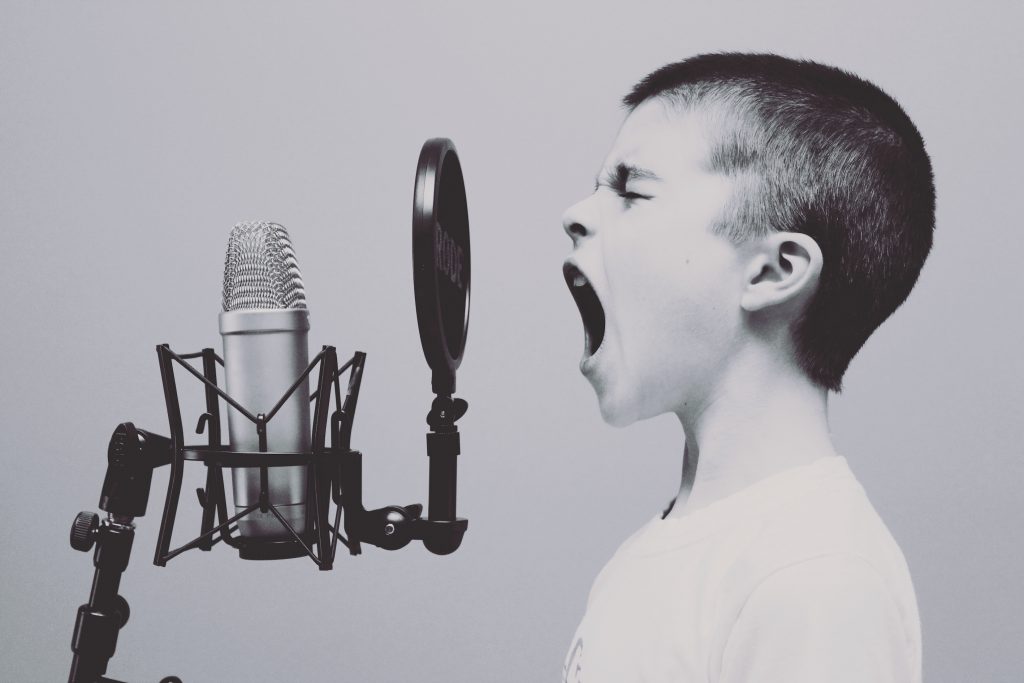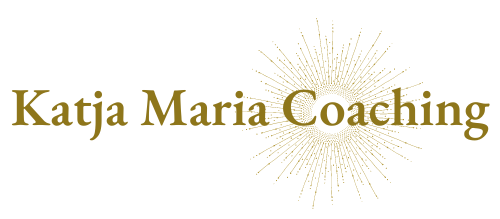I love writing about all things related to singing and creativity, so when Laurel Irene and David Harris from VoiceScienceWorks contacted me to ask if I’d be up to contribute to the new publication The Unfiltered Source, I was both happy and honored. The publication explores topics in the voice world from as many angles as possible: each eZine centers through one topic, which is explored in free form by singing teachers and singers, poets, medical professionals, artists and actors. Here are my musings about the fascinating topic “The Natural Voice”. For this blog, I have added the video links that I refer to in the footnotes, so that you can listen to them directly here on this page. You can read the whole eZine here:
In Search Of The Natural Voice
by Katja Maria Slotte
Originally published in The Unfiltered Source – an eZine for the Communal Voice Lover. Vol. 1. Episode 1. (2016)
“I want to find my natural voice”, singers sometimes tell me. But what is that, a ‘natural voice’? And why do we assume that it’s ‘lost’ and have to be found in the first place? These questions have been puzzling me for quite some time. And whether consciously or unconsciously, I guess I have been searching for it too since I embarked on the path of vocal training many years ago. The problem with the term ‘natural’ is that it can refer to many different things. Is ‘natural’ something we are born with? If a ’natural’ voice refers to something that’s unrefined, then a trained voice would by definition be ‘unnatural’. And yet, one of the biggest goals in vocal training seems to be finding a ‘natural’ sound. But who decides what is ‘natural’? The singer or someone else? Some singer-songwriters and artists are weary of signing up for singing lessons, because they are afraid that the lessons will alter their ‘natural’ sound.
Back to where we started
’Natural’ is perhaps not the same as ‘easy’, and ‘easy’ perhaps depends on the context. Let’s consider ’natural’ in the context of sounds that are ‘primal’¹, and triggered by emotional responses: shouting, crying, and so on. Take a powerful sound for instance. A shout is a completely ‘natural’ sound that most of us find ‘easy’ if it’s outside the context of singing. We don’t think about technique when we call out to a friend across the street, or cheer for our favourite sports team. But when we take the shout and put it in the context of singing, for example singing with a powerful volume, many of us feel we have to ‘work for it’ and thereby find the sound challenging and perhaps even ‘unnatural’. One of my favourite video clips with ‘natural’ sounds is Jennifer Holliday singing “And I am telling you” at the 1982 Tony Awards². What she is doing, is basically throwing a tantrum on stage! All sounds that she uses in her singing are sounds that all of us have used at some points in our lives: we have all shouted, screamed, moaned, cried loudly at a high pitch, with a distortion on the sound even. We all did that at least when we were babies and children. So why can sounds like these feel difficult for some people in the context of singing then?
Perhaps we might associate singing with different sounds, or with something difficult. We might have ‘lost’ access to certain sounds in our voice due to cultural influences, or even due to training. Perhaps we have been told our voice is not suited to make specific sounds. We might be afraid of making certain sounds because someone has told us they are harmful for the voice. Singing teachers and coaches often have their own personal philosophies of what ‘correct’, ’good’ or ‘natural’ singing sounds like, often guided by personal taste. Certain sounds might be dismissed as ‘unhealthy’, ‘not desirable’ or ‘unnatural’ because of the way they sound. Nowadays, thanks to vocal science and research, we can dispel many myths about the voice and know that even sounds that might sound ‘unhealthy’ can be produced in a healthy way. The good news is, we all have access to this big variety of sounds, and with singing technique we can find back to all the sounds we have lost access to.
Expressing emotions
There’s more to singing though than just producing sound and being able to control the techniques needed to produce sounds. High-intensity singing, like Jennifer Holliday uses in her performance, is a technically challenging task that requires a lot of stamina and energy. It can feel ‘easy’ once all the pieces of the puzzle required for this type of tone production fall together. But many muscles have to deliver an effort in order for the voice to come out like this, and that might not feel ‘easy’ while you are learning to do it. Don’t we just wish then, that we could rewind and go back to our childhood tantrums… We didn’t have to think about technique back then. It was all connected to emotion then, and those sounds just ‘naturally’ came out.
Herein lies one of the keys to a ‘natural’ voice, I believe. Any type of sound that we cannot connect to emotionally might feel challenging or even ‘unnatural’. Also, being as outspoken in front of an audience as Jennifer Holliday is in her performance, might feel awkward for some people. Last time I saw a child throw a tantrum in a public place, I don’t exactly recall the parents giving applause afterwards. So even if you could connect to the emotion that’s needed for the sound, daring to exhibit that emotion in front of other people might feel difficult. Or perhaps your personality is different, and the same emotion that causes one person to “yell, scream and shout” would trigger a completely different reaction in you, and you would sing a completely different type of song with different sounds!

Escaping the ‘natural’ box
Another problem with the term ‘natural voice’ is, that it could imply that we have one voice with one set of possibilities, like a box in which we are predestined to operate. I remember for example being told I should not sing certain types of songs with powerful high notes because I did not have a ‘big voice’. Years later I participated in a course where I challenged my own vocal technique by learning new techniques and singing styles I never had sung before. The first day I sat there listening to all these wonderful singers with ‘big voices’ singing power ballads, thinking “Oh, my voice can not do that…” and perhaps feeling slightly bad about it. That remark about my voice still lingered on in my mind. After I sang my song, a jazz waltz, some of those singers who I just had admired came to me and said, “I love your voice, I wish I could sing with such a light and flexible sound”. It made me realise we all tend to want what we don’t have, like with so many things in life. And perhaps more importantly, that all singers have comfort zones and boxes that we tend to operate within.
We are not predestined into these boxes though. During the course I learned what it took to sing powerful high notes. It certainly did feel good to know that I could not automatically be ‘boxed’ into singing certain styles or songs. Everyone has access to all sounds and dynamics. Our voice is not ‘one’, it can be many things! In my search for my powerful high notes, I learned not just about the techniques, but also very many things about myself. I learned that not only did I have to blast some mental blocks and inhibiting self-beliefs while working on those new techniques, but I also had to allow different sides of my personality to be displayed through those powerful sounds. I found out that my ‘power sound’ felt more ‘natural’ to me in some styles than in others. I even learned that being ‘powerful’ didn’t necessary have to do with just volume, and that I could express powerful emotions with a variety of sounds.
I believe what sounds and feels ‘natural’ to us is linked to both personality and taste. We also have to be able to connect to the songs we sing. Even if If I might be able to produce the sounds that are necessary for a specific style of music, sing a song in that style and perhaps even come across relatively credible to listeners, it will still feel ‘unnatural’ to me if I don’t connect with the song or the style. It will feel as if I am putting on a voice, instead of using a full range of dynamics and expression in my ‘natural’ voice. I therefore don’t consider myself equally ‘natural’ in all styles. So actually you could say that there are boxes. But these boxes have more to do with our own discoveries and choices than with what someone else tells us we can or cannot do.

Your singing Self
Perhaps we should see training the voice not so much as a process of changing our voices, but instead as a process of learning how to access the variety sounds that are available to all of us since beginning of mankind. And how to use these to communicate emotions in a musical context, expressing our unique personalities. We can learn to speak the musical language of a specific style, and learn what sounds are connected to that style. And we can even create our own style by mixing elements from styles we love. What sounds and feels ‘natural’ to each individual is a very personal matter, and singing teachers should therefore be careful to not let their own personal taste guide their teaching.
I recently paid attention to what people are saying when they talk about ‘natural’ singing. “My soul was set free”, “I found myself, with the fullest voice I could ever imagine”, “I’ve learned how to sing from my soul”… Many people seem to mention that the singing is somehow connected to what they feel is their Self. Our voices reflect our personalities, our unique selves. I like the way Kristin Linklater describes it: “The natural voice is transparent – revealing, not describing, inner impulses of emotion and thought, directly and spontaneously. The person is heard, not the person’s voice.³”
We say the eyes are the mirror to your soul, but perhaps it is the voice that is? Listen to Norwegian singer-songwriter Ane Brun’s cover version of Beyoncé’s “Halo”, for example. I find these two versions, the original and the cover, a wonderful example of different personalities expressed through the same song:
So how do we find our own, ‘natural’, authentic singing voice then? I think we need to work on the whole package: body/voice, mind and soul. We can enter through different doors: through singing technique, playfulness and vocal improvisation, musicianship, connecting to imagery and emotions, working with psycho-physical techniques, or by removing blocks, fears and all sorts of mental ‘clutter’. In the process, we will find out many (new) sides about how our self wants to express itself through our voices, through a multitude of sounds and possibilities, and then learn to make choices that feel ‘natural’ to ourselves. Always stay true to yourself. After all, only you can know what feels natural to you.
Footnotes:
